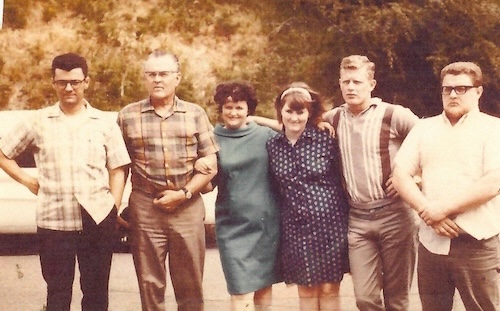John Sharp & Anne Dooley
John Sharp, son of Mathias Schaup and Catharina Engert, was born about 1738, Augusta County, Virginia. Anne Dooley, daughter of Henry B. Dooley and Martha Anderson, sister of Thomas Dooley, was born 1746, Bedford County, Virginia. John and Anne married on 25 January 1762, Bedford County. John and Anne had ten children:
-
Solomon, born 28 February 1765, Bedford County;
married his cousin Catharine Sharp about 29 May 1794 in Kentucky;
died 21 May 1845, Mercer, Kentucky.
We have different dates for Solomon’s birth and death:
- 9 February 1763 - May 1847
- 10 October 1765 - 20 March 1845, Lees Creek, Clinton County, Ohio
- Sampson, born about 1767, Bedford County; married Nancy Dooley (1775-1840) on 5 March 1790, Bedford County; died 28 April 1854 (possibly September 1854), Bedford County.
- Nancy Ann, born 1770, Morgan, Georgia; married Joseph N. Scott (1766-1817) in 1765; about 11 children; died 29 February 1824.
- Noah, born about 1772, Bedford County; married Jane (Jenny) Dooley (1772, Bedford, Virginia - 1823, Bedford, Virginia) on 13 December 1792; died 28 October 1823, Franklin, Simpson, Kentucky.
- Lott, born about 1777, Bedford County; married Rachel Dooley (1768-1850) on 23 May 1809, Bedford County; died around 1870.
- Hulda Marza (Hulty), born 1780, Bedford County; married Moses Dooley (1776-1850) on 2 April 1796, Bedford County, Virginia; died December 1849, Bedford County, Virginia.
- John, Jr., born 1782; married Patsey Dooley (1782-1850) on 2 February 1804, Bedford County; died about 11 October 1872.
- William, born about 7 June 1783; married Sally McMurtry (1791-1872) on 24 October 1810, Mercer County, Kentucky; died about 25 April 1840.
- Bersheba (Barshaba), born 1784, Bedford County; married Abraham Cofer (1786-1848) on 16 November 1816, Bedford County; died 1823.
- Job John, born 14 June 1792, Bedford, Virginia; married Sarah Ann Haines (1803-1867); died 5 July 1860.
John died 27 September 1830, Bedford County. Anne also died in 1830, Bedford County.
John Sharp’s father, Mathias, is Frederick James Sharp’s fifth great grandfather, as follows:
- Mathias Schaup (1685-1750) married Maria Catharina Engert (1698-1750).
- Mathias and Catharina begat John Sharp (1740-1830), who married Anne Dooley (1746-1830).
- John and Anne begat Noah Sharp (1772-1823), who married Jenny Dooley (1772-1823).
- Noah and Jenny begat George Dooley Sharp (1798-1878), who married Elizabeth (Betsy) Miller (1708-1884).
- George and Betsy begat James Andrew Sharp (1837-1915), who married Frances Indiana Privett (1840-1909).
- James and Indiana begat William Newton Sharp (1874-1964), who married Barbara Ellen Leffler (1879-1927).
- William and Barbara begat Frederick Lee Sharp (1905-1990), who married Rose Ugenia Geffray (1913-1983).
- Frederick Lee and Rose begat Frederick James Sharp (1931-2014), who married Mae Annette Fox Sharp (1931-2017).

Noah Sharp
John and Anne’s son Noah Sharp, born about 1772, was a slave owner and a landowner in Kentucky. He signed his will on 28 October 1823:
First I give and bequeath to my son George all of the Land lying South of the upper spring branch and running up the same so as to include the spring and running thence with the orchard fence to the Clift of the river, thence down the river to the Beginning, and the ballance [sic] of my land I give and bequeath to my other two sons Job and Jacob to be equally divided between them having respect to quality and Quantity.
2d I give to my daughter Locky Bain my Negro Girl named Betsey.
To my daughter, Jane, I give my negro boy named John and the gray filly and one feather Bed and bedding—and to my daughter, Eliza, I give my negro boy named Sam and also fifty dollars in specie to be paid her when she shall arrive to the age of sixteen out of the money arising from the sale of the Estate.
The balance of my Estate to be sold and the bonds which I hold for money due me if ever Collected to be equally divided among my five children namely Job, George, Jacob, Jane & Eliza.
3d and lastly, I do appoint my son Job Sharp and Edward Wall my Executors to this my last will and testament hereby revoking all others. In witness whereof I have hereunto set my hand and seal this 28th day of October in the year of our Lord one thousand eight hundred and twenty three.
Family of George Dooley Sharp and Elizabeth (Betsy) Miller
George Dooley Sharp, the son of Noah Sharp and Jenny Dooley, married Elizabeth (Betsy) Miller on 29 June 1823, Mercer County, Kentucky. In 1827, they sold their farm in Kentucky and joined the Sharps and Millers in Clinton County, Indiana. After that, they moved to Hoosier Hollow, Eagle County, Wisconsin. George was an organizer for the Pleasant Hill Presbyterian Church. They were among the first settlers in that area of Wisconsin.

From History of Richland County, Wisconsin (edited by James H. Miner), pages 1024-1026:
The first move toward a settlement in what is known as Hoosier Hollow was made in 1849, when William Miller, George D. Sharp [who was married to William’s sister Elizabeth], and Preston Say [married to Lott and Rachel’s daughter Bathsheba Sharp in 1834] came from Indiana and located here. Miller and Sharp both erected log cabins, after which the parties returned to Indiana for their families. In September of 1849, they again came, accompanied by their families. Mr. Miller settled on the southeast quarter of section 23. Sharp located on the southeast corner of section 14.
He [George Dooley Sharp], his wife, and his daughter Mary were members of Pleasant Hill Presbyterian Church, organized in 1851, where he was an Elder.
The town of Eagle was organized in 1853. The first town meeting was held in April of that year, when the following named were elected officers: Supervisors, C. G. Rodolf, chairman, Josiah Newburn and Thomas E. Hesler; clerk, L. B. Palmer; treasurer, James Appleby; school superintendent, G. D. [George Dooley] Sharp; justices of the peace, Thomas Palmer and Josiah Newburn; constable, William Sharp [son of George Dooley Sharp]; assessor: L. B. Palmer; overseers of highway: David D. Miller and John Thompson.
Elizabeth (Betsy) Miller obituary
From the Republican and Observer, 17 April 1884, page 8:
April 9, 1894, at the residence of her son George, in the town of Eagle, Mrs. Betsey Sharp, age 85 years 8 months and 24 days.
Mrs. Sharp was born in Kentucky July 16, 1798. In June 1823 she was married to George D. Sharp, with whom she lived a loving faithful wife for years after their marriage. Owing to their anti-slavery principles with other families of like religious and political faith they emigrated to Tippecanoe county, Indiana, where in the grown woods they hewed them out a home, organized a church and built what is now known as the Oxford meeting house. Some thirty-five years ago, with their old Kentucky friends, they emigrated to this state, settling in the home where ever afterwards they lived and where they died, and were true in the faith of their fathers they assisted in the organization of the Pleasant Hill Church. During the late Rebellion Mrs. Sharp gave two brave sons to help save our Nation: Two sons, James and George survive her; one daughter Mary, the late wife of Thomas Graham, of Muscola, preceded her a few years ago to the better land. She was the last survivor of the old Miller family, the oldest member of the Pleasant Hill Church and the oldest person to be buried in the adjoining cemetery. It is needless to state that after such a life she quietly fell asleep in Jesus, leaving behind her memories and an example that will long be cherished by all who ever had the privilege of knowing dear, sainted “Aunt Betsey.” Her funeral services were held on the 10th last, at the Pleasant Hill Church, and in accordance with her dying request were conducted by her former pastor and friend, A. Pinkerton.
George Henry Sharp
George and Betsy’s son George Henry Sharp was a farmer in the town of Eagle, Richland County, Wisconsin. George and Laura Alvaretta Ewing were married on 11 November 1880 in Christian Church with John Walworth presiding; Thomas Ewing [father of the bride] and John Collins witnessed the ceremony. They had three children.
James Andrew Sharp
James Andrew Sharp was born 21 November 1837 in Tippecanoe County, Indiana, near Lafayette, and died 2 December 1915. He was the son of Elizabeth (Betsy) Miller and George D. Sharp and the grandson of Henry Miller. Henry was born in Augusta County, Virginia, 6 December 1759. He served in the Revolutionary War.
James came to Wisconsin with his parents in a covered wagon, which was still at William Newton Sharp’s home when we visited about 1961. All of the children rode in that wagon. They forded the river at what is now Port Andrews and settled at the location known as Pleasant Hills.
James married Frances Indiana Privett on 24 March 1859 in Richland County, Wisconsin. James and Indiana had 14 children. Indiana Privett was the first teacher of the first school house in the Eagle Corner district No. 3. The school was a log house built in 1858 in section 28. She also taught in the first schoolhouse in district No. 6, erected on the southeast corner of section 11 in 1857, after she married James Andrew Sharp.
James was county assessor for about twenty years and served on the county board for several terms. He was elected sheriff of Richland County, Wisconsin, serving from January 1899 through December 1900, and they moved to Richland Center at that time.
James married Christina Meredith Morrow Dosch (1864-1939) in 1911. Christina was born in 1864 in England and brought to the U.S. when she was six. She married James Calvin Dosch (1864-1894) and had six children. When James married Christina, he was 74 years old; she was 47. He died in 1914 of a cerebral hemorrhage incurred while on a hunting trip in the northern woods. On 21 August 1917, Christina married again, to George Marshall. He was 67; she was 53.
James Andrew and Indiana’s son Earl Ezra Sharp left Wisconsin before 1906, possibly over a dispute with his family about his girlfriend. He married Christina Bonham (1882-1937) and they lived in Spokane, Washington, where their son, Cecil Loren, was born in 1905. In the 1920 census, they were living in Klamath Falls, Oregon. Earl was the proprietor of a pool room. In 1942, his brothers Jim and Bill went to Oregon looking for him. In 1950, his sister Edna Edith walso went to Oregon to find him. They were unsuccessful. Christina once returned to Richland Center to visit, but came alone.
James Andrew and Indiana’s daughter Victoria Lucretia Sharp married Walter Thomas Davis on 14 April 1902 at a Baptist church by Reverend J. E. Trenery. Witnesses were Della Pomeroy and Everett Stetler. Walter was a carpenter in Lafayette, Indiana.

William Newton Sharp
Margaret Lee Lewis Tainter (1922-2001) from Muscado, Wisconsin, Sonora Sharp Casey’s grandaughter, told Crystal Sharp Burnette this story. William and Barbara were living in Richland Center. After Barbara died in 1927, William got into a fight with a man in a bar, and thought that he had killed the man, so he left Richland Center to go to Taylor county. After the hubbub died down and he found that he hadn’s killed anyone, he moved his family there, and stayed until his death near Donald in Taylor county.
Louis James (Jim) Bethke (1928-2020) told this story to Frederick James Sharp about William Newton Sharp’s brother Thomas Lucas (Tom). All the brothers were good at something. One was good at wrestling, one at playing ball, and Tom was good at boxing. One guy who was a champion boxer wanted an exhibition fight in Hub City, but no one wanted to fight with him. He tricked Tom into coming up to his camp, telling him that there would be a fight to see. When Tom got there, he took him upstairs to a room, then locked the door and said, “You are going to stay here until you agree to fight me at the exhibition.” Tom didn’t like this offer, so he proceeded to beat the tar out of the boxer, then he left, locked the door, and left with the keys.
Mae Sharp remembers this of William. He worked in the Ringling Brothers Circus, and that is where he met his wife, Barbara. Pictures of them are in the Wisconsin Clown Museum, in Baraboo, Wisconsin. William had albums of pictures of the circus and the children spent hours going through them. He was blind and lived in a small house on several acres of land. He had an old wagon that his sons Ross and Will would hook up to the tractor and pull our children and Emmertt’s children around the land. William spent a lot of time then in his bed and in his big chair by the woodstove. He wouldn’t use the commode in the house bathroom that his sons put in for him. He didn’t think a person should do such a thing in the house, so he would go to the outhouse in the yard behind the house. He drank whisky, always having a bottle by his chair and bed.
Around 1961, when we as a young family visited the farm, William was living in that small house with his sons Will and Ross, who had a certain sense of humor. Even though their father was totally blind, they gathered fireflies at night and pinched off their butts when they were lit, collecting them in a mason jar. They put the jar at their father’s bedside and told us that they did this so he could see if he woke up at night.
Tom Sharp remembers this story. In 1955, William got sick and went to the hospital, where his doctor told him that he had cancer and would die soon. William said that if he was about to die, he’s prefer to die at home, so he went home, got totally drunk, and lived another nine years. His autopsy showed no sign of cancer.
Circus
Before William Newton (Bill) Sharp married Barbara Ellen Leffler, he was a tent man and a barker for the Ringling Brothers Circus. Barbara and her brother Joseph Malton Leffler were born in Indiana but grew up in the Hoosier Hollow area in Richland County, Wisconsin. Since they were children, Barbara and Joseph performed, since they were albinos, in the Ringling Brothers Circus side show as curiosities along with Betra, Serpent Queen, Unzie, Aboriginal Wonder, Jo-Jo, Original Dog-Face Boy, and Mrs. Charles Andress, Mind Reader. On 13 April 1897, the newspaper reported that Barbara employed Cristie Honer of Hoosier Hollow to make her stage outfits, and that she would meet the Ringling Brothers in Chicago about the 23rd.
Republican Observer, 14 June 1951:Joseph Leffler, quite well known in this county, died at the Richland hospital on Friday, June 8th, following an illness of several months.
Joe was born in Indiana on August 23, 1882, and with his parents, Mr. and Mrs. Alvah Leffler, came to this county when he was a lad. He was born, as was his sister Barbara, an Albino, and he and his sister traveled with the Ringling Bros. circus for a number of years as part of the side show, for which they posed as natives of an exotic foreign land. They became general favorites of the circus people connected with the show and also with the curcus going public. During their circus life they visited Richland Center with the show.
When he retired from the circus life Mr. Leffler engaged in farming and as a milk hauler. For the past several months he had made his home with his sister, Mrs. Tim Manning, in the town of Dayton.
Surviving are a son, Joseph Jr., of Richland Center, five daughters, Mrs. Gerald Wilson, route 2, Richland Center; Mrs. Steve Gambino, Madison; Mrs. Frank Krevalt, Garfield, N. J.; Mrs. Evan Harrison and Mrs. Garth Wheaton, Madison; a sister, Mrs. Tim Manning, Dayton, and a half-brother Ed Persinger of Basswood.
Funeral services were held Monday from St. Mary’s Catholic church, Rev. Owen Mitchell officiating, burial taking place in the church cemetery. The rosary was recited Saturday and Sunday nights at the Lunenschloss-Doudna Funeral Home.
Photos
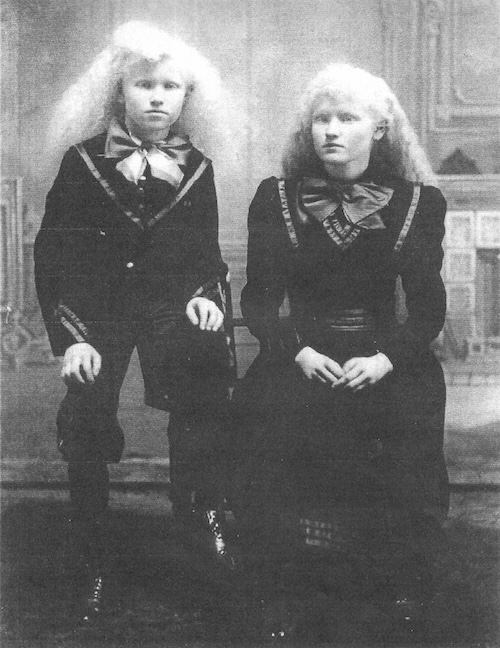
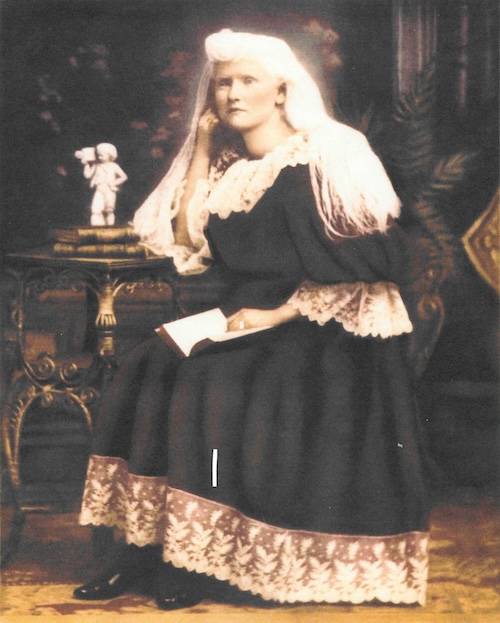
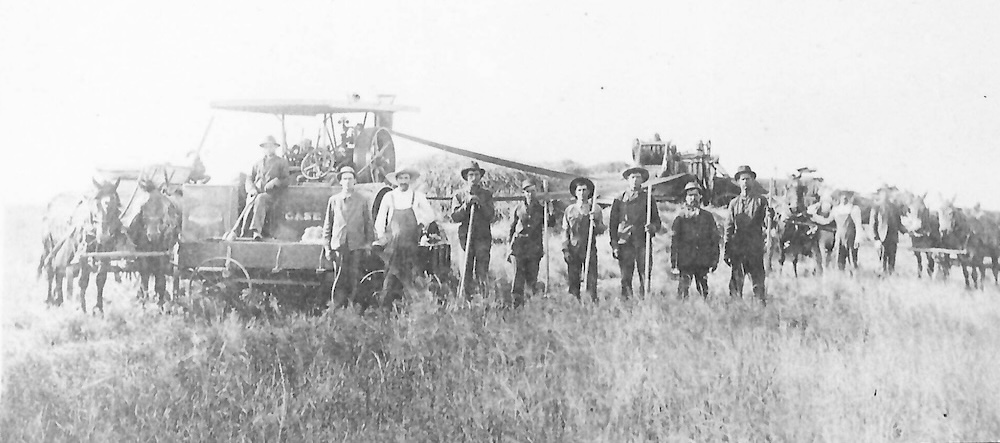
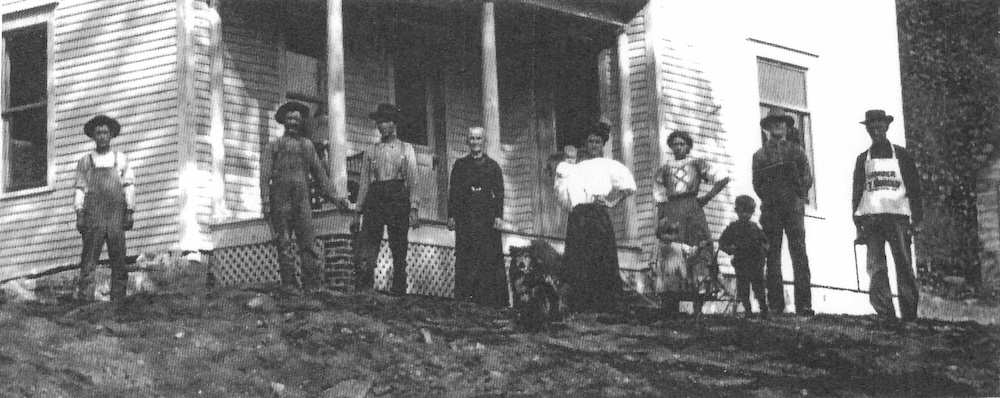
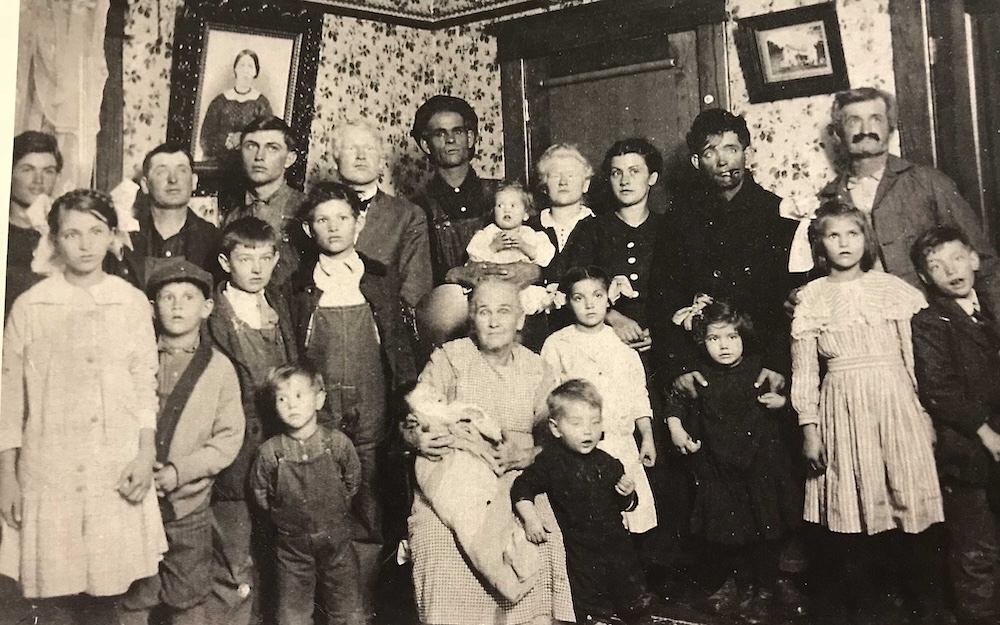

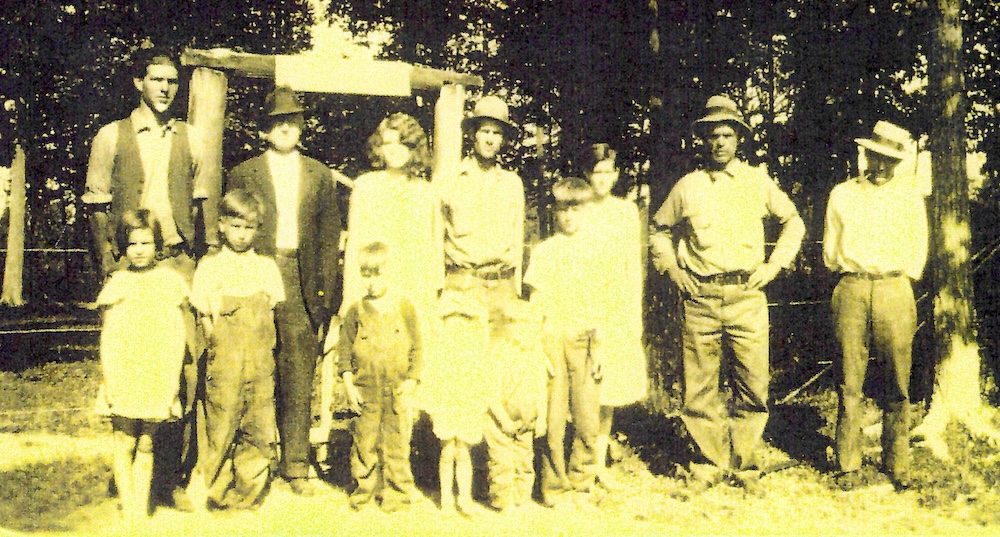
Civil War
John and his brother Adam were slave owners in Virginia and Kentucky. They left Kentucky because of their anti-slavery views. Their grandsons (George Dooley’s sons) fought in the Civil War.
George Dooley and Betsy Miller’s son William A. Sharp was born 12 January 1829, Kentucky, and enlisted in the 11th Wisconsin Infantry Company D on 12 September 1861. The Civil War had started on 12 April 1861.
According to page 911 of the History of Richland Center, Company D went to Camp Randall, where the men were mustered in to the service of the U.S. under Captain Jessie S. Miller. The 11th regiment was attached to the 2nd brigade under General Alvin Peterson Hovey. In General Frederick Steele’s command and under orders to proceed south, they passed through Missouri to Arkansas. Their first engagement of any note was at Bayou Cache, 7 July 1862, when companies D, G, H, and I held in check a vastly superior rebel force until the arrival of re-enforcements. After this conflict, the regiment arrived at Helena on 13 July. In October they returned to Pilot Knob, Missouri, where they remained in camp all winter.
William died of disease that winter, on 24 January 1863, at Van Buren, Missouri.
William’s brother Newton N. Sharp, born 29 Jun 1840 in Indiana, had a similar experience. He enlisted in the 19th Wisconsin Infantry Company I, participated in the same engagement at Bayou Cache, and died 25 August 1862 in Portsmouth, Virginia, of disease.
Emmertt Sharp and Lorraine Malo
Lorraine Malo married Edwin William Martin in 1945, but Edwin died in 1946. Emmertt and Lorraine married in Medford, Oregon, on 2 March 1948. For thirteen years, they farmed near Donald, Oregon. Then they moved to Hannibal, Wisconsin, where they ran a supper club for five years. In 1966, they moved to Hot Springs, Montana, where Lorraine taught in elementary school. She became the first woman to be high-school principal in Montana, and she finished her teaching career as a teacher and principal for Bering Strait School District in Alaska. Emmertt worked as a foreman with the U. S. Forest Service in Plains, Montana, and did independent contracting thinning the woods, until he retired in 1983.
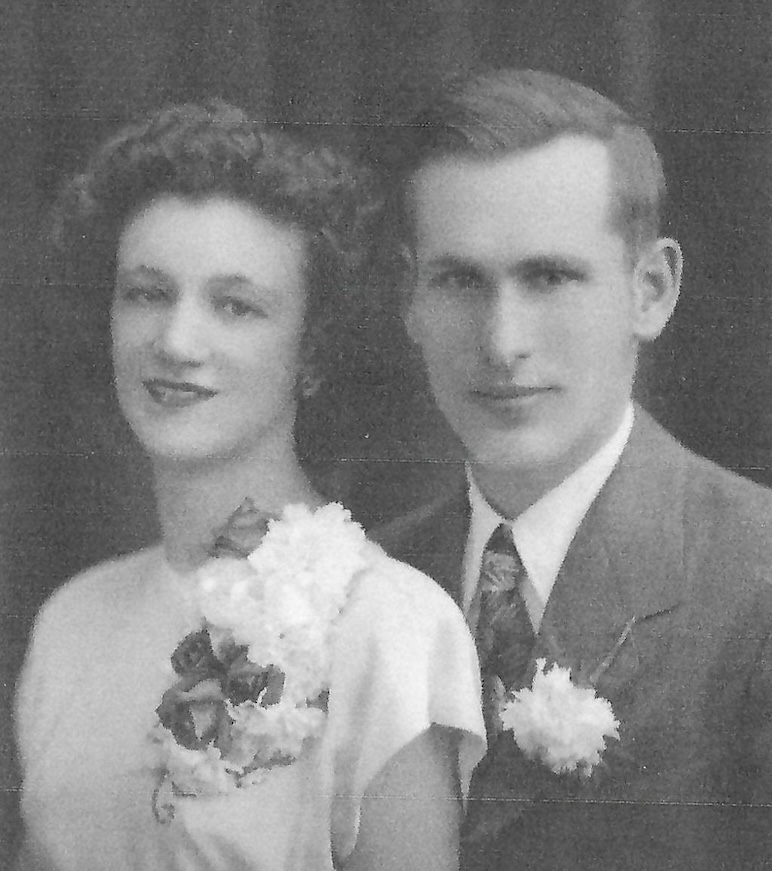
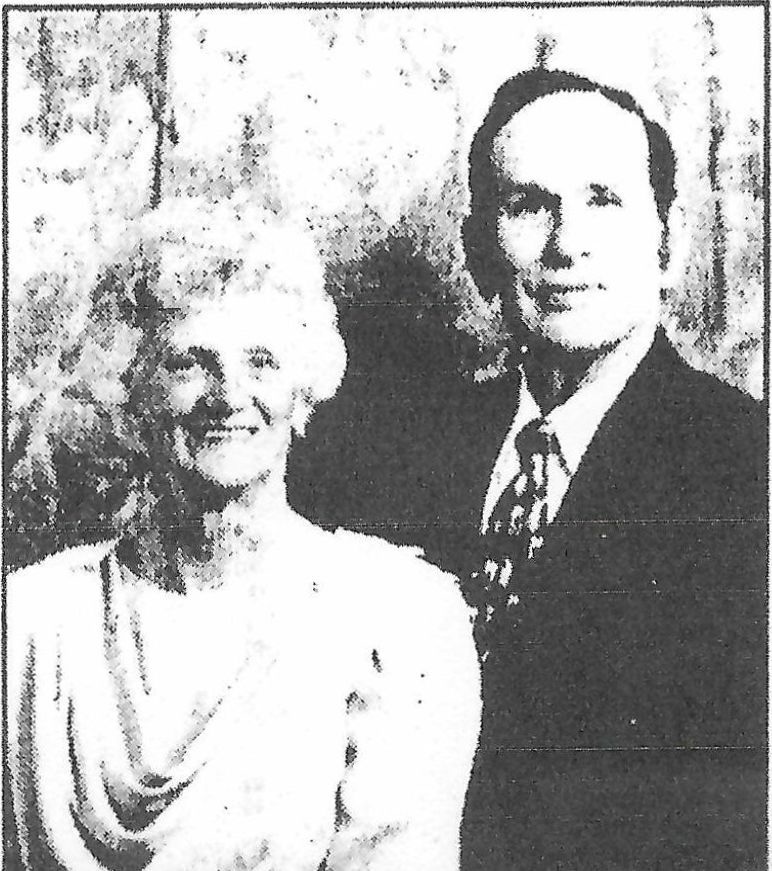
Frederick Lee Sharp
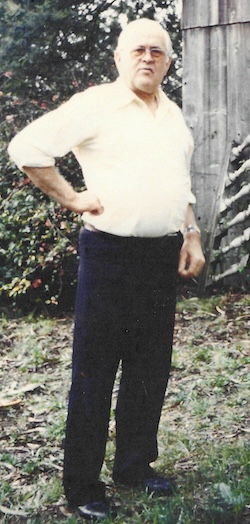
Fred Lee Sharp and Rose Ugenia Geffray married on 27 November 1927. They separated when Virginia Ellen was about five years old and Frederick James (Freddy) was two. Rose came back and tried to take Freddie, but his father got him back.
Fred and Retha Lora Church married in 1934 and had three children: Vernon Robert, Philip Dean, and Linda Darlene.
Fred’s third marriage was to Alberta Jeanne Kinninook (1920-1977). Alberta had three daughters from her previous marriage to Raymond Charles Hansen (1916-2006):
- Helen Irene, born 11 April 1940, San Rafael, California; died 3 April 2004.
- Joyce Rae, born 16 July 1941; died 31 May 2008.
- Judith Ann, born 20 August 1943; died 11 December 2010.
The 1950 census listed Alberta’s three daughters as stepdaughters with the last name of Sharp.
Fred’s fourth marriage was to Lucille, who was of Spanish Mexican descent. Fred said this was a partnership more than a marriage; she had land and he was a carpenter.
When he was young, Fred lived in Richland Center, Wisconsin. After he married Rose, they moved to California. His family were Protestants and hers were Catholic, so they didn’t get along. In California, Fred worked at Scotia, where he built several houses. In 1955, he moved to Anchorage, Alaska, where he worked for the Alaska Railroad and lived with his son Frederick and family. He retired from the Railroad because of a back injury. He met Lucille in Alaska after Fred and Mae transferred to the States. He was manager of the Alaska Railroad Club on Government Hill in Anchorage when the Great Alaskan earthquake struck, 27 March 1964. He built an overpass from the side of the Club to the school on the other side of the main road. This was later taken down because of earthquake damage. His son Philip stayed with him in Alaska for a while, but Philip found that Lucille had too much of a fiery temper. When she was upset with Fred, she would throw things. Once, in Phoenix, she threw something through a glass door, so Fred decided that was enough and ended the marriage. He moved in with his son Frederick in Fortuna, California. At that time, he was having severe pain, which we later found out was due to blocked arteries. He moved to Tuscon, because he figured that the warmer climate would be easier for his heart, and managed a HUD retirement home.
He met Minnie Burg and she started working with him; he worked as a maintenance man and she worked in the office. They planned to marry several times, but Minnie had to take care of her ailing mother and brother. They moved to Silmar, California, where her brother managed apartments when her brother got sick. Fred had two by-pass surgeries. While recovering from the second, he had a car accident, which gave him a stroke, leaving him with leg damage. He seemed to manage quite well in his own apartment, but he got a bad case of disentary. His doctor was on vacation, so he didn’t go to the hospital until it was too late. The hospital gave him morphine, which he was allergic to, and he died, but they brought him back and put him on a kidney machine.
Frederick James Sharp
Frederick James Sharp was born 1 February 1931, Scotia, California. He went to grade school and high school in Northern California.
In 1947, he got a letter of permission from his father to join the army and left at the age of sixteen, in 1947. A postcard from him from Los Angeles on 10 February 1948 tells his father that he was put into the Air Force. This note is postmarked in Briceland, California, on 12 February 1948. He had been in the army for six months.
He married Mae Annette Fox on 8 July 1950 at Fort Richardson (later renamed to Elmendorf Air Force Base) in Anchorage, Alaska, while serving in the Air Force. He worked as an airplane mechanic, manager, electronic technician for radar. He did extra work as a bartender and as a bowling alley manager. He was trained as a radar technician in Boloxi, Mississippi. He retired with 22 years of service in October 1969 as Master Sargeant, turning down a promotion to Chief Master Sargeant. He had been working at the radar station on Mount Tamalpias, Marin County, California.
After retiring, he worked for McPhail’s Appliance, learning refrigeration repair. For three years and five months, he worked for the telephone company as an electronic equipment repairman. He then started working with his wife in the seafood canneries in Alaska in the summers as machinist, foreman, manager, and electrician. They worked at Icicle Seafoods Barge in Dutch Harbor and Dillingham, Kenai Packers in Kenai, Kodiak Fisheries in Kodiak, Bendicksons Seafood in Dillingham, Chatham Straits Seafood in Petersburg, and at a processing plant in Valdez. In 1972, he got his license for First Class Radio Operator. After moving from Petaluma to Fortuna, California, he attended and did some teaching at College of the Redwoods, learning Automotive Engineering, including diesel. In 1989, he got his electrician license, having worked in Alaska as an electrician for several years.
![Dear Pop, I made it in. I’m in Los Angeles now, on my way to San Antone Texas. Well, I haven’t much to say except I [am] in the Air Force. Feb.10/46, Freddie. Addressed to Fred L. Sharp, Briceland, Humboldt Co. California. Postmaked 10 February 9 PM 1948.](../images/Postcard10Feb1946.jpg)
